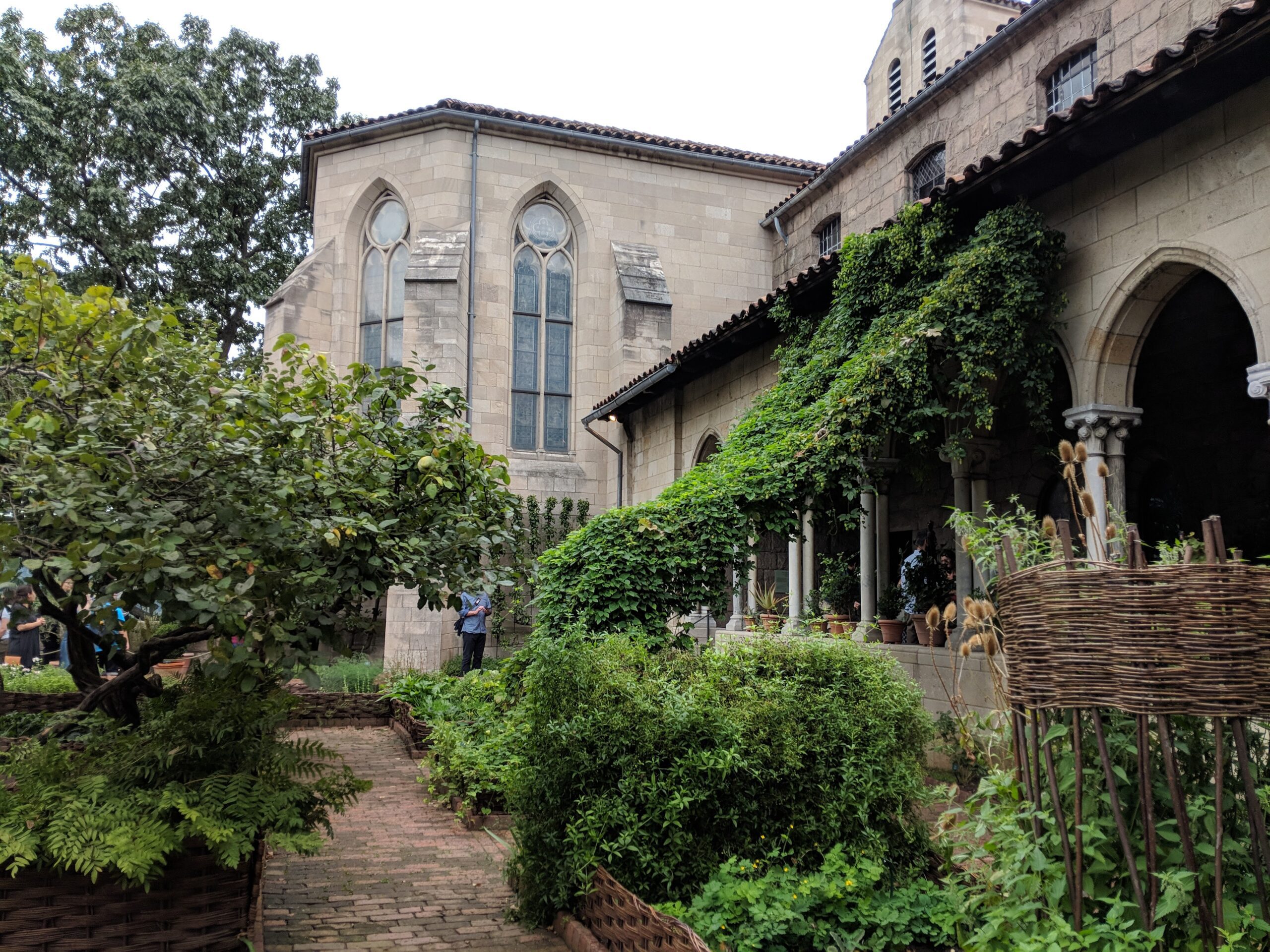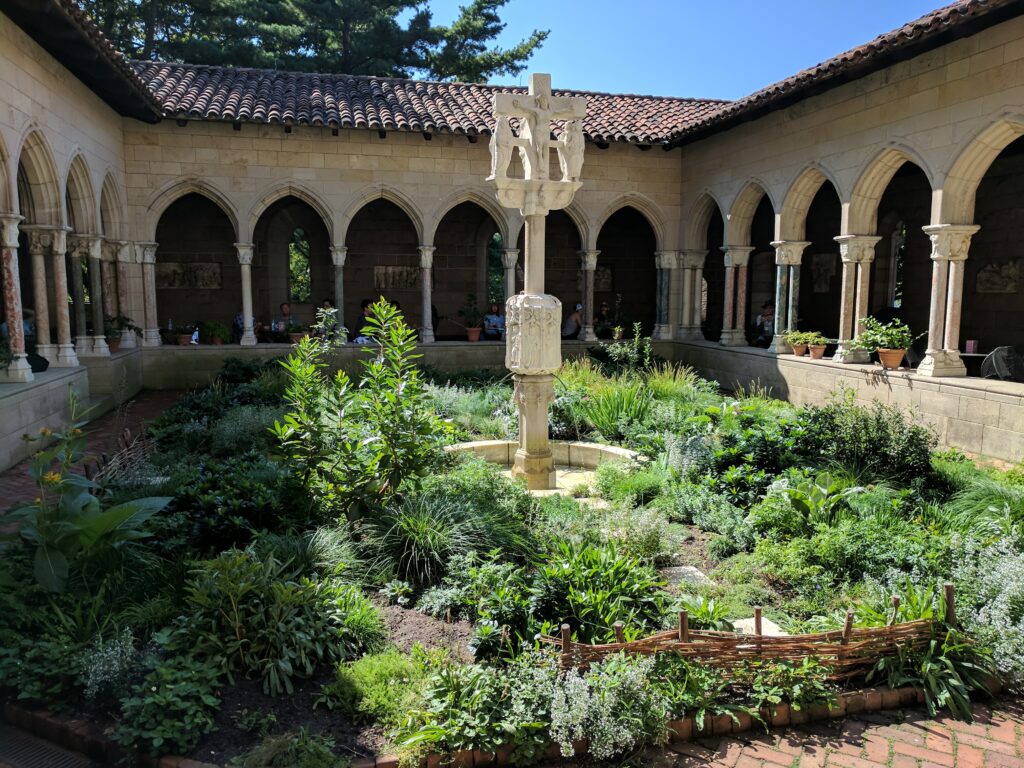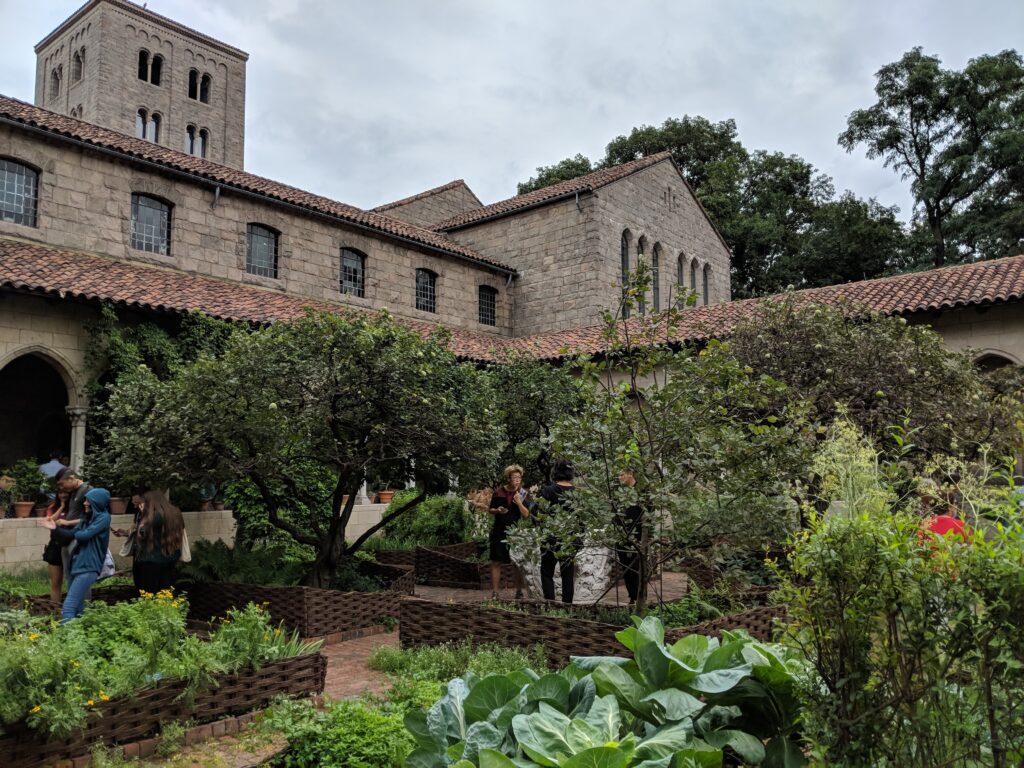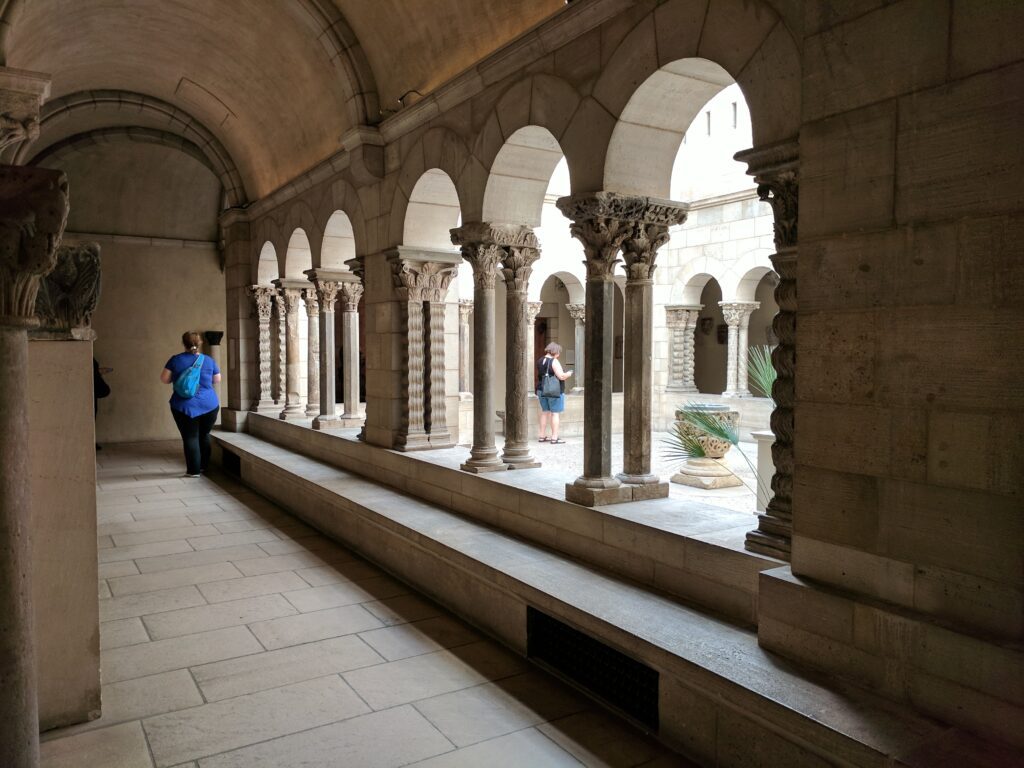
A Guide to The Met Cloisters
If you want to escape the hustle of New York City for an afternoon and be immersed in green foliage and medieval revival, then the Met Cloisters is your next museum destination.
Commonly overshadowed by its sister museum, the Metropolitan Museum of Art, The Met Cloisters offer a refreshing change of scenery from the bustling city. At the Cloisters, you can walk through the history of medieval Europe and Byzantium.
Take the A train to the Cloisters, breathe a little fresh air, and gaze through a few stained-glass windows at the Hudson River as you indulge in this one-of-a-kind cultural experience.
Where Are the Met Cloisters?
The Cloisters are located in the far northwestern corner of NYC in the Washington Heights neighborhood, overlooking the New Jersey Palisades. The Met Cloisters can be found inside Fort Tryon park, nestled beside the Hudson river at 99 Margaret Corbin drive fort Tryon.
How Do I Get to the Met Cloisters?
The best way to get to the Cloisters in New York is by taking the subway. The nearest subway stops are the 1 train (red line) to Dykman street or the A train (blue line) at either Dykman or 190th street if you would prefer a walk through the park.
From there, you will need to walk about ten minutes to get to the entrance of the Met Cloisters. You can walk down either Dyckman Street or Broadway/Juan Rodriguez Way and enter Tryon Park from either side.
Another option would be to take the bus. The M100 makes a stop at the Anne Loftus Playground, a short walk from the entrance of the Met Cloisters.
There will be signs pointing you to the location of the Cloisters, but if you are in doubt, just keep heading up the hill until you reach the top.

What Can I See at the Met Cloisters?
The Exterior
The exterior of the Met Cloisters is as much a work of art as the items it holds. Much of the exterior and portions of the foundation are refurbished pieces from monasteries from the Middle Ages. The main building also contains architectural elements and settings taken mostly from French abbeys, like the cloisters from which the museum gets its name.
The most notable of the Cloisters is the Cuxa cloisters located on the south side of the building’s main level. These serve as the centerpiece of the museum as a whole. The Cuxa cloisters were originally erected in 878 at the Benedictine abbey of Saint Miquel de Cuxia in Spain.
The Trie cloisters, found on the lower level, were compiled from two 15th-century structures from France. These cloisters surround a courtyard garden that hosts various plant species and a limestone fountain in the center.
Other features of the museum’s exterior that help immerse visitors into the architecture and feel of a medieval monastery are some of the chapels incorporated into the building design.
The most notable is the Fuentidueña chapel. The Fuentidueña chapel is the museum’s largest room and houses a large apse at its center. An apse is a semicircular romanesque recess with a broad arch and vaulted ceilings, typically designed to hold an altar.

Panel Paintings and Sculpture
The museum has an extensive collection of frescos, paintings on panels, small statuettes, boxwood miniatures, and small reliquary shrines. The Met Cloisters feature a number of must-see works of art from the Middle Ages including the panel painting Merode altarpiece by Robert Campin. This exceptional example of early Netherlandish painting has been in the possession of the Cloisters since 1958.
Illuminated Manuscripts
Although the collection of illuminated manuscripts is smaller compared to other institutions, the quality is of exceptional standards. The manuscripts are held within the Treasury room, located in the northern portion of the museum.
Within the collection is a book of hours (a personalized prayer book) attributed to Jean Pucelle. Titled Hours of Jeanne d’Evreux, the small gothic book includes 209 folios or full spread designs, of which are 25 miniatures. The book is lavishly decorated in grisaille drawings and almost over 700 border images. Now, who did this book belong to? Jeanne d’ Evreux was the third wife of Charles IV of France, giving the book a high-status provenance.
Tapestries
The Met Cloisters host two dedicated rooms for textile designs, specifically two individual series of tapestries: the South Netherlandish Nine Heroes (c.1385) and The Hunt of the Unicorn Tapestry (c.1495-1505).
The Nine Heroes room can be entered from the Cuxa cloisters at the center of the museum. They are considered to be some of the earliest surviving examples of tapestry design. The figures found within the tapestries are meant to represent the scriptural nine worthies (Hector, Alexander the Great, Julius Caesar, Joshua, David, Judas Maccabeus, King Arthur, Charlemagne, and Godfrey of Boullion).
The unicorn tapestry room can be entered down the hall from the previous hall containing the nine heroes. The tapestries consist of a series of large colorful hangings that depict the story of the hunting of a unicorn, and were originally produced for Anne of Brittany and completed circa 1495-1505. The most famous of the seven scenes is the Unicorn Rests In A Garden.
Stained Glass Windows
The Met Cloisters’ collection consists of over 300 stained glass panels, most from the 13th to early 16th-century France and Germany. The majority of these can be found in the Boppard room, which can be entered either through the unicorn tapestry room.

Gardens
The gardens at the Met Cloisters are an attraction in and of themselves. Planted around reconstructed Romanesque and Gothic cloisters, they provide a real example of the gardens found in medieval Europe.
In addition to the traditional gardens, the Cuxa cloister courtyard, and an orchard, there is the Bonnefont Cloister herb garden. The herb garden follows the 9th-century edict of Charlamagne, claiming for 89 species to be grown on his estates. However, this list has been supplemented by monastic records.
Walking tours of the gardens are led by museum staff and horticulture specialists.
What Is the History of the Met Cloisters?
The original premise for the Met Cloisters was to house the collection of George Grey Barnard, an American sculptor, and architect with an impressive medieval art collection. Due to his financial problems, Barnard sold his collection to John D. Rockefeller as an acquisition for the Metropolitan Museum of Art. This acquisition included strictures that would become the foundation and core of the cloisters.
In 1927, Rockefeller hired architect Frederick Law Olmsted Jr., son of Frederick Law Olmsted Sr, architect of Central Park, to build Fort Tyron Park. Rockefeller later offered to use the park as the home for the cloisters for the Metropolitan.
The Cloisters building and adjacent 4-acre gardens were designed by Charles Collens. Construction took place from 1933 to 1938 and included elements from abbeys that were imported over from Catalonia and France. The Cloisters building and gardens officially opened on May 10, 1938.
Since its inception, the Cloisters have been governed by the board of the Metropolitan Museum of Art.

What Are the Hours of the Met Cloisters?
The Met Cloisters are open Mon, Tues, Thurs -Sun from 10 am to 5 pm. They are closed on Wednesdays and most national holidays. Be sure to look online before planning your visit.
Also, if interested take a look online at metmuseum.org to see a guided tour schedule.
How Long Should I Spend at the Met Cloisters?
The Met Cloisters is located at the northern tip of Manhattan, making it far from most in downtown, Brooklyn, or other boroughs. So therefore to spend an adequate amount of time pursuing the museum and gardens factoring in the commute time is crucial.
In order to be able to appreciate the whole collection, architecture, and acreage of gardens, it’s recommended to have at least three hours for your visit.